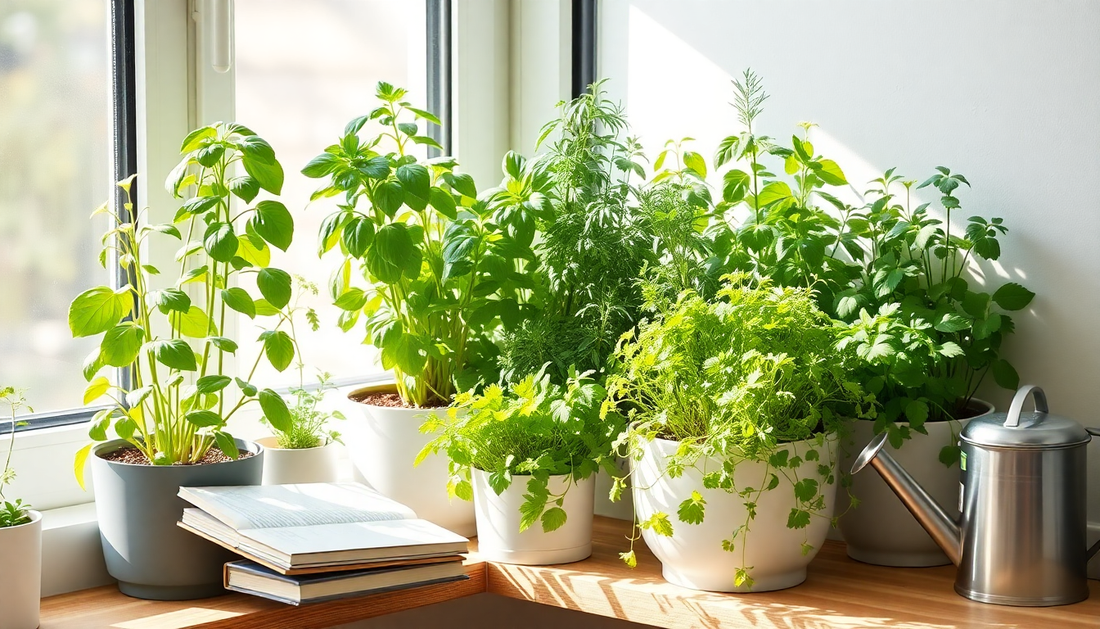
Grow Herbs with Minimal Water: A Guide to Thriving Indoor Herb Gardens
Share
In today's fast-paced world, where time is a precious commodity, many of us struggle to maintain a lush, vibrant garden. However, with the right approach, you can cultivate a thriving indoor herb garden that requires minimal water and maintenance. Whether you're a seasoned green thumb or a novice gardener, this comprehensive guide will equip you with the knowledge and techniques to grow herbs effortlessly, even in the driest of climates.
Understanding the Needs of Herbs
Herbs are remarkably resilient plants that can thrive in a variety of environments, but they do have specific requirements when it comes to water, soil, and sunlight. By understanding these needs, you can create the perfect conditions for your herbs to flourish.
Water Needs
One of the most common challenges in herb gardening is overwatering. Many herbs, such as rosemary, thyme, and lavender, are adapted to dry, well-drained soil and can easily become waterlogged if they receive too much moisture. The key is to water your herbs only when the soil has partially dried out, typically once a week or every two weeks, depending on the climate and growing conditions.
Soil Requirements
Herbs prefer a well-draining, nutrient-rich soil that allows for proper root aeration. A potting mix specifically formulated for herbs or a blend of compost, perlite, and sand can provide the ideal growing medium. Avoid heavy, clay-based soils, as they can become compacted and lead to root rot.
Sunlight Needs
Most herbs thrive in full sun, requiring at least six hours of direct sunlight per day. If you're growing herbs indoors, place them near a south-facing window or consider investing in a grow light to ensure they receive the necessary light exposure.
Choosing the Right Herbs for Low-Water Gardening
When it comes to creating a low-water herb garden, it's essential to select the right varieties that are well-suited to your climate and growing conditions. Here are some of the best herbs for minimal water requirements:
Rosemary
Rosemary is a hardy, drought-tolerant herb that can withstand periods of dryness. Its aromatic foliage and versatile culinary uses make it a popular choice for indoor and outdoor gardens.
Thyme
Thyme is another Mediterranean herb that thrives in dry, well-drained soil. It's a low-growing, evergreen plant that can tolerate partial shade and infrequent watering.
Lavender
Lavender is renowned for its calming fragrance and its ability to thrive in hot, dry conditions. This versatile herb can be grown indoors or outdoors and requires minimal watering once established.
Sage
Sage is a robust, aromatic herb that can tolerate drought conditions. It's a great choice for low-maintenance gardens and can be used in a variety of culinary and medicinal applications.
Oregano
Oregano is a hardy, resilient herb that can adapt to a range of growing conditions, including dry soil. It's a versatile addition to any herb garden and can be used fresh or dried.
Establishing a Watering Schedule
Maintaining a consistent watering schedule is crucial for the health and longevity of your indoor herb garden. Here are some tips to help you establish an effective watering routine:
Check Soil Moisture
Before watering, use your finger to gently press into the soil. If the top inch or two feels dry, it's time to water. Avoid watering on a set schedule, as the soil's moisture needs can vary depending on factors like temperature, humidity, and plant growth.
Water Deeply
When you do water, aim to soak the soil thoroughly, allowing the water to reach the roots. This encourages the plants to develop deeper root systems, which can better access moisture in the soil.
Adjust for Seasons
Your watering needs may change with the seasons. During the warmer, drier months, you may need to water more frequently, while in the cooler, wetter seasons, you can reduce the watering schedule.
Monitor Plant Health
Keep a close eye on your herbs for signs of stress, such as wilting, discolored leaves, or slow growth. These can indicate that the plants are either under or overwatered, and you may need to adjust your watering routine accordingly.
Maximizing Soil Moisture
In addition to a well-planned watering schedule, there are several techniques you can use to help retain soil moisture and reduce the frequency of watering:
Mulching
Applying a layer of organic mulch, such as bark chips or shredded leaves, around the base of your herbs can help to retain moisture in the soil and suppress weed growth.
Grouping Plants
Clustering your herbs together can create a microclimate that helps to conserve moisture. The plants will also benefit from the shared resources and support each other's growth.
Choosing the Right Containers
If you're growing herbs in pots or planters, select containers with good drainage and a suitable size for the plant's root system. Avoid overly large containers, as they can hold excess moisture and lead to root rot.
Troubleshooting Common Issues
Even with the best care, your indoor herb garden may encounter some challenges. Here are some common issues and how to address them:
Wilting or Drooping Leaves
If your herbs are wilting or drooping, it could be a sign of either underwatering or overwatering. Check the soil moisture and adjust your watering schedule accordingly.
Yellowing or Discolored Leaves
Yellowing or discolored leaves can indicate a nutrient deficiency or a pest problem. Consider fertilizing your herbs with a balanced, water-soluble fertilizer and inspect for any signs of pests or disease.
Slow Growth or Stunted Plants
If your herbs are not growing as vigorously as you'd like, it could be due to insufficient sunlight, poor soil quality, or root competition from weeds or other plants. Evaluate your growing conditions and make any necessary adjustments.
By understanding the unique needs of herbs and implementing these low-water gardening techniques, you can create a thriving indoor herb garden that requires minimal maintenance and provides a bountiful harvest. Embrace the joy of growing your own herbs and enjoy the fresh, flavorful results in your cooking and everyday life.
